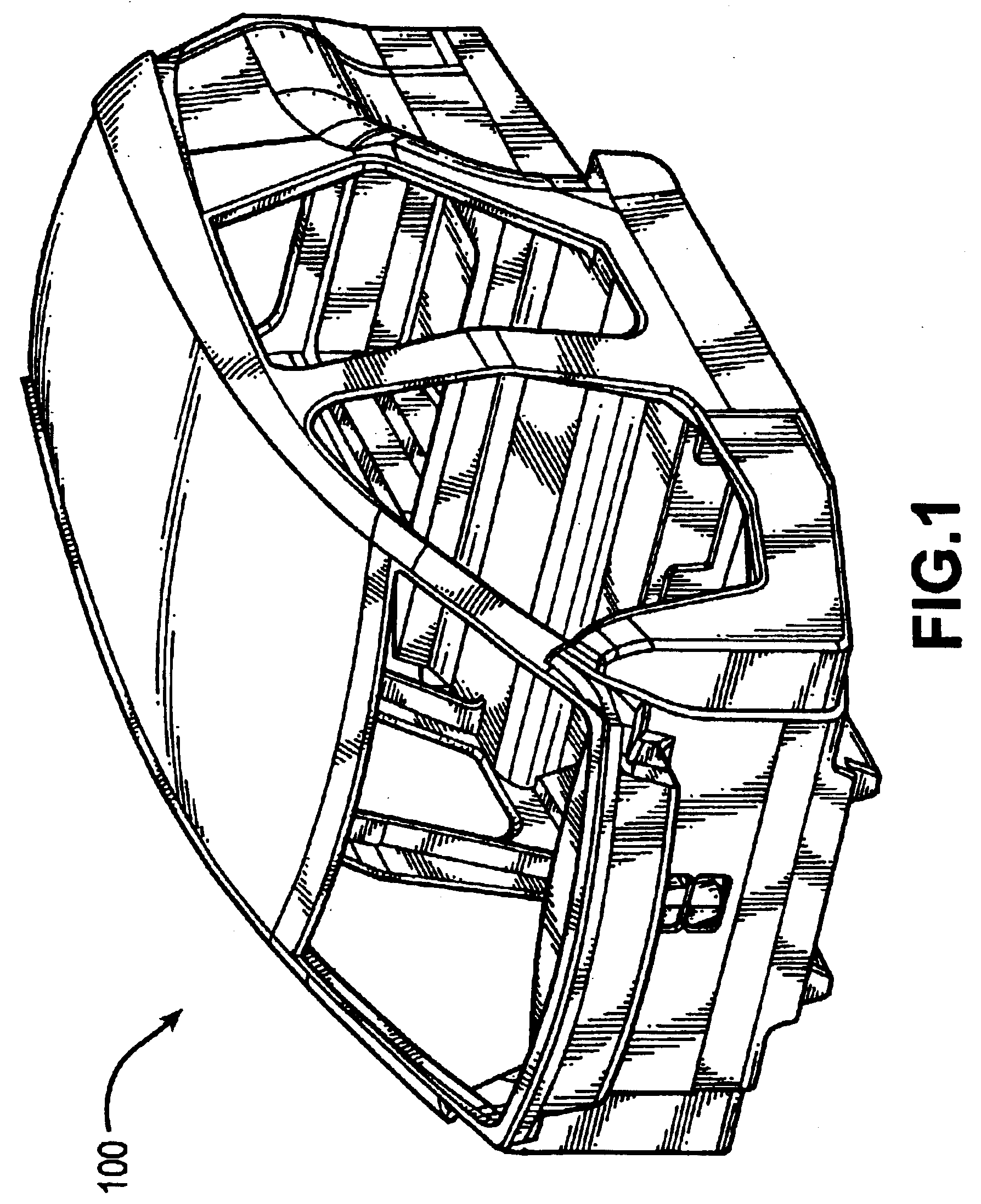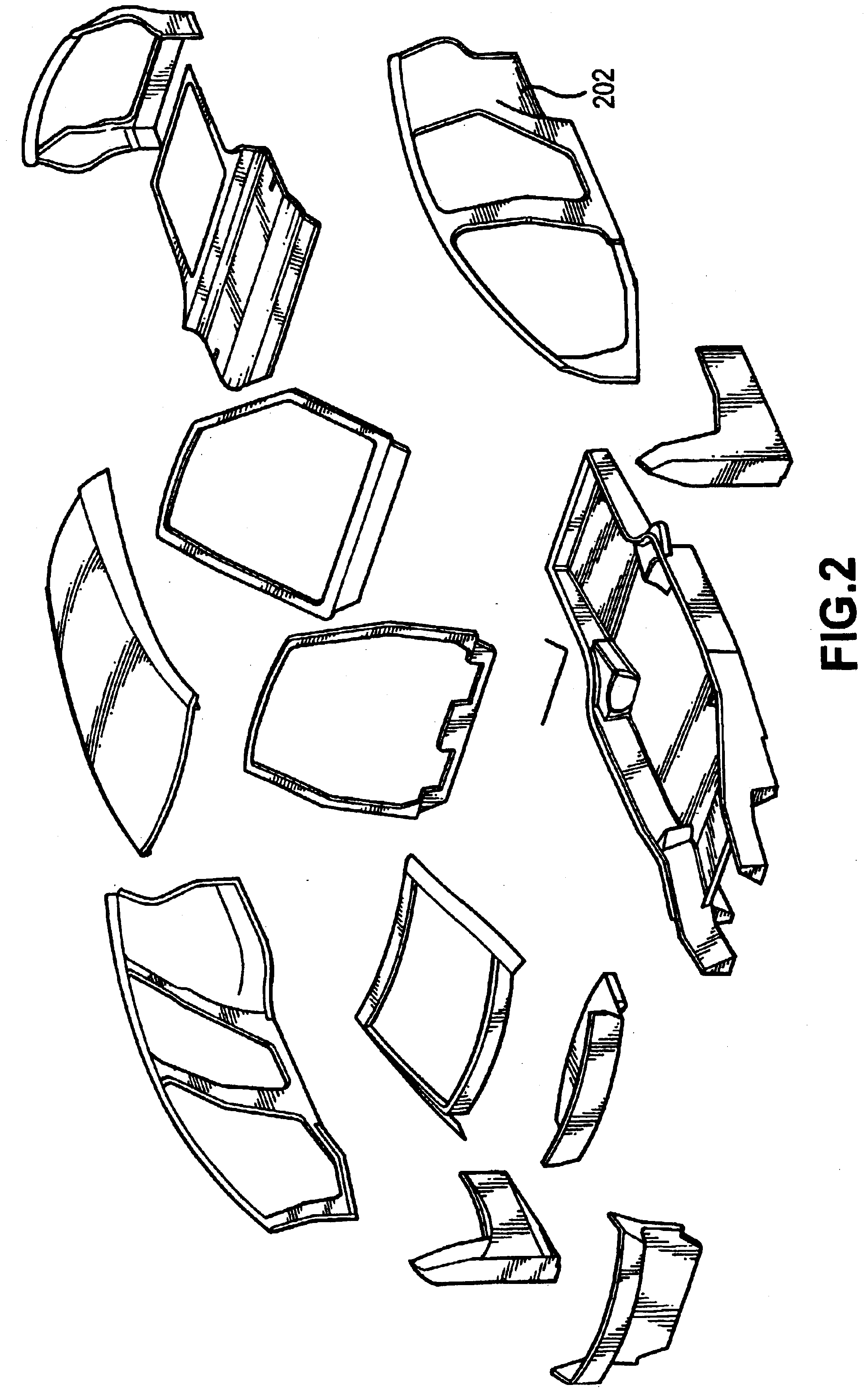Process and equipment for manufacture of advanced composite structures
a composite structure and advanced technology, applied in the direction of weaving, bandages, other domestic articles, etc., can solve the problem of not offering the potential for dramatic improvement in structural performan
- Summary
- Abstract
- Description
- Claims
- Application Information
AI Technical Summary
Benefits of technology
Problems solved by technology
Method used
Image
Examples
Embodiment Construction
)
[0034]Reference will now be made in detail to the preferred embodiments of the present invention, examples of which are illustrated in the accompanying drawings.
[0035]FIG. 1 shows an isometric view of a body structure 100 made in accordance with the present invention.
[0036]As shown in FIG. 2, the body structure is preferably divided into a number of parts. The boundaries of these parts are preferably selected to facilitate manufacture. One way to facilitate manufacture of the parts is to create parts that can be referred to as being “globally planar,” meaning that their overall shapes are as flat as possible. Complex overall geometries are achieved by combining more geometrically simple parts, as shown in FIG. 2. Such parts are more amenable to the process described herein because the blanks have to deform less to conform to the desired part shape. Globally planar parts also have simpler tooling.
[0037]All of the parts shown in FIG. 2 can be made according to the present invention. ...
PUM
| Property | Measurement | Unit |
|---|---|---|
| Angle | aaaaa | aaaaa |
| Speed | aaaaa | aaaaa |
| Displacement | aaaaa | aaaaa |
Abstract
Description
Claims
Application Information
 Login to View More
Login to View More - R&D
- Intellectual Property
- Life Sciences
- Materials
- Tech Scout
- Unparalleled Data Quality
- Higher Quality Content
- 60% Fewer Hallucinations
Browse by: Latest US Patents, China's latest patents, Technical Efficacy Thesaurus, Application Domain, Technology Topic, Popular Technical Reports.
© 2025 PatSnap. All rights reserved.Legal|Privacy policy|Modern Slavery Act Transparency Statement|Sitemap|About US| Contact US: help@patsnap.com



